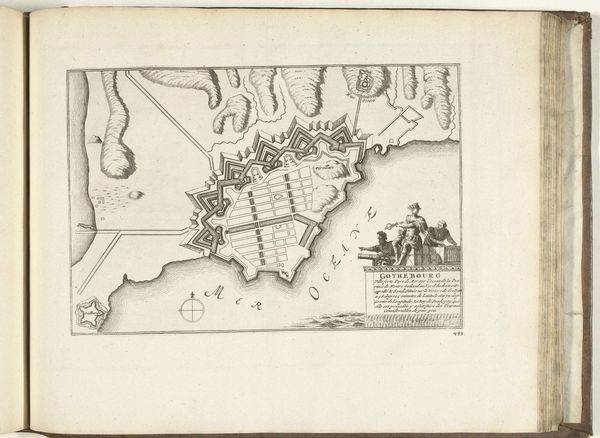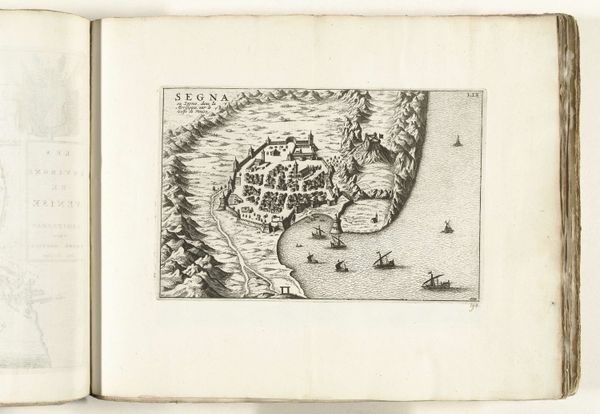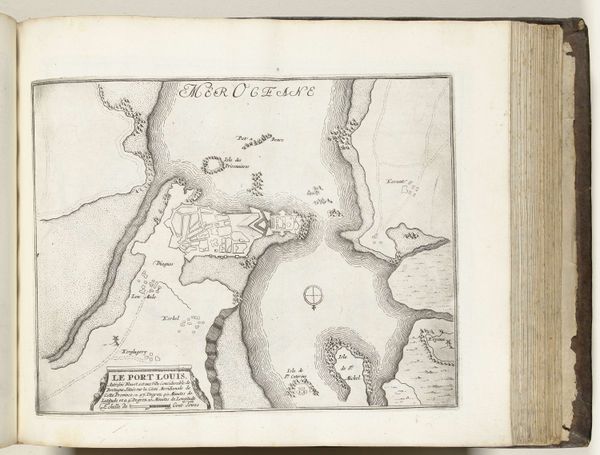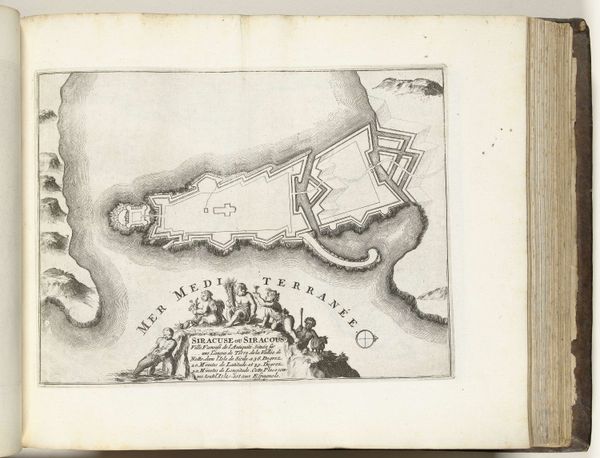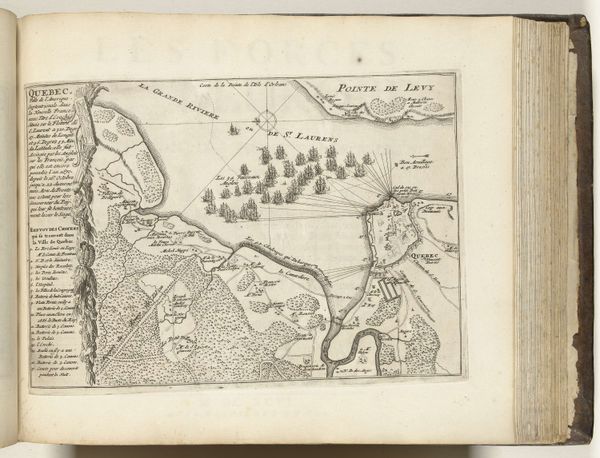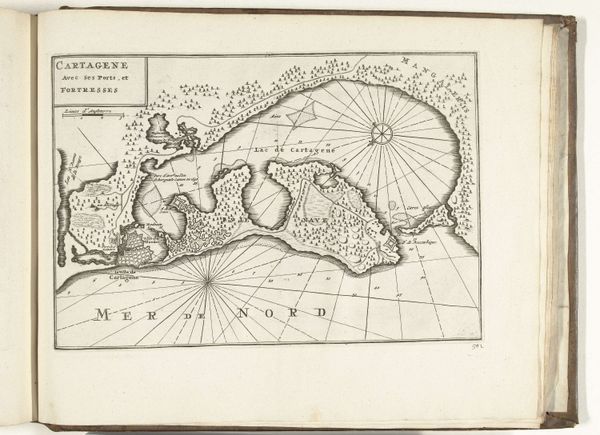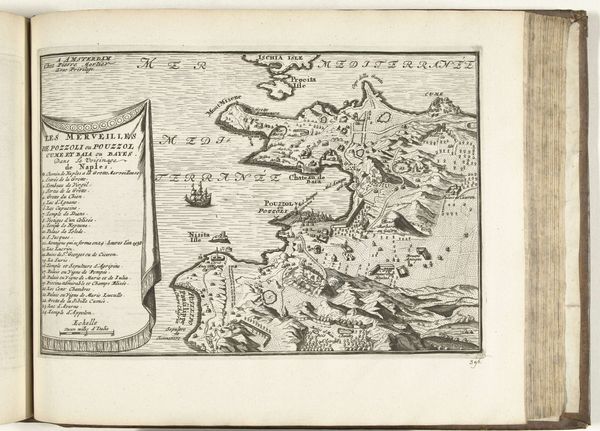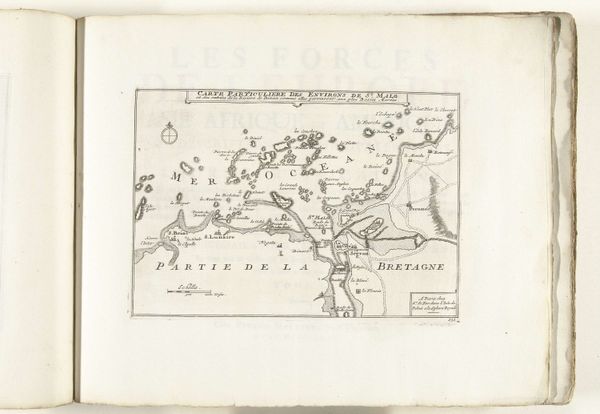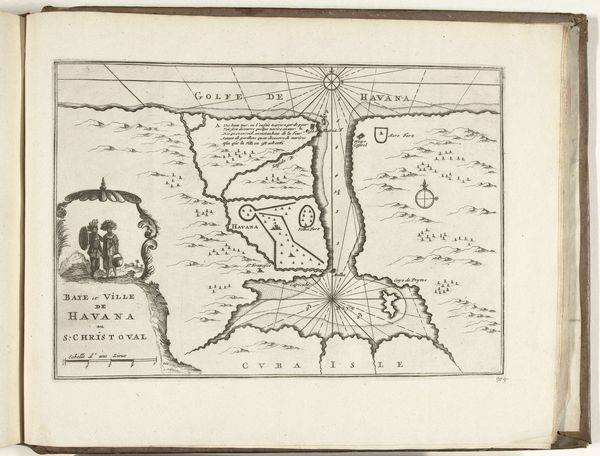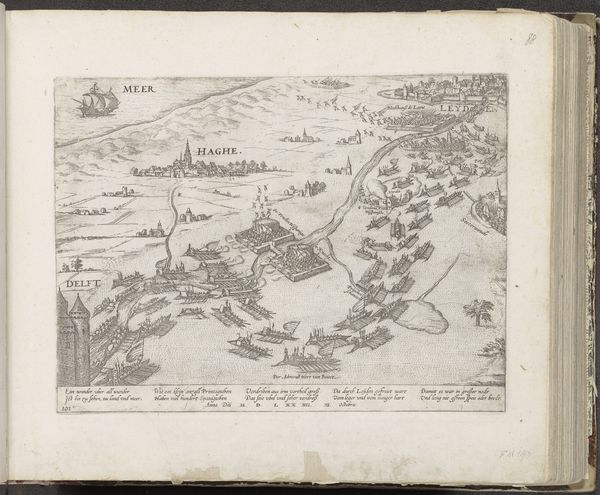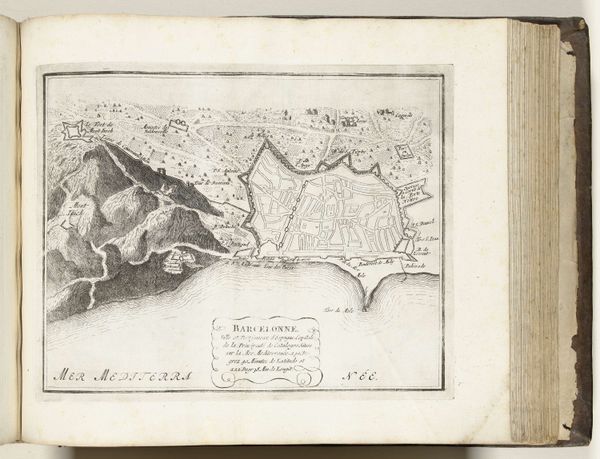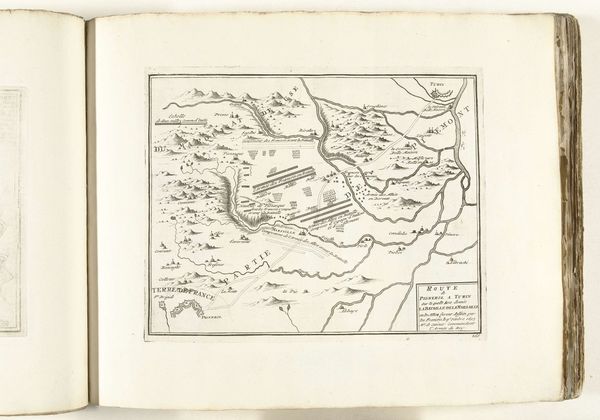
drawing, paper, ink
#
drawing
#
aged paper
#
baroque
#
pen sketch
#
sketch book
#
perspective
#
paper
#
personal sketchbook
#
ink
#
sketchwork
#
pen-ink sketch
#
pen work
#
sketchbook drawing
#
cityscape
#
storyboard and sketchbook work
#
sketchbook art
Dimensions: height 231 mm, width 293 mm
Copyright: Rijks Museum: Open Domain
Curator: This is a fascinating find from the Rijksmuseum collection, a cityscape rendering of Gothenburg, Sweden, dating back to circa 1693-1696. It's presented as a drawing on paper, using pen and ink, by an anonymous hand. Editor: It has such an open, raw energy. The architectural structure—the layout of the city—almost radiates outward with a palpable sense of imposed order. Do you think the rendering reveals more than just the lay of the land? Curator: Absolutely. Cityscapes like this were far more than simple representations of geography. This piece demonstrates both the aspirations of urban planning and the necessities of military strategy. Consider the star-shaped fortifications, indicative of the era's emphasis on defense, meant to project power and invincibility. Editor: Those star forts! The geometric design just leaps off the page. Looking beyond military tactics, could this shape, the star, represent something grander— perhaps the idea of enlightenment spreading outward? Cities often took on potent symbolic roles, reflecting the ruling powers' worldview. Curator: Interesting notion. And certainly plausible considering that period's artistic vocabulary, which infused nearly everything with multiple layers of significance. We should not dismiss the possible economic factors shaping its growth either; Gothenburg's position as a trading port likely influenced its fortified design. Editor: Ah, yes, the tangible realities of commerce intertwining with idealized forms. But focusing back on the imagery, I see the ocean depicted below. Water often embodies the unconscious, and placing the city above it lends it a conscious, almost domineering position. Is the mapmaker commenting on civilization versus nature? Curator: Possibly. Though one could equally read the ocean as Gothenburg's lifeblood, its very means of survival and connection to the world. Either reading demonstrates the symbiosis that supported urban existence in those times. In short, such details emphasize that our cities did not exist in a vacuum. Editor: So the stark lines of the urban planning stand in relief against the yielding fluidity of the natural elements—land and water giving it context. A powerful representation! This makes one contemplate how cityscapes have been a means for shaping not only geographical but cultural identity, too. Curator: Indeed. These historical documents enable a glimpse into the intricate social fabric interwoven with artistic expression. They reflect far more than surface appearances. Editor: I completely agree. By studying them, we unveil how urban spaces evolved into cultural containers, retaining, conveying, and molding their communities' consciousness. Thank you.
Comments
No comments
Be the first to comment and join the conversation on the ultimate creative platform.
